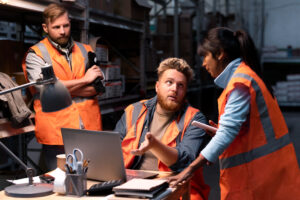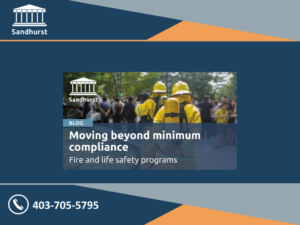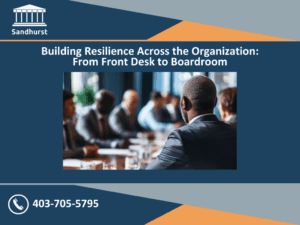Across Canada, most energy regulators (Oil & Gas Operators) are required to engage with local authorities and emergency response agencies in the communities where they operate. These stakeholders may include municipalities, police and fire services, and First Nations; essentially, anyone who could be responsible for responding to an emergency that affects their community.
Engagement can come in the form of Community awareness training which helps to close information gaps between local responders by creating a space to share knowledge about the specific risks associated with oil and gas operations and to explore how emergencies could impact surrounding communities.
The objectives of these forums is to support both operators and response agencies by:
- Strengthening relationships and encouraging collaboration.
- Facilitating the exchange of important information.
- Supporting coordinated planning for emergency response.

As Jim Montgomery notes in his article ‘During the Disaster It’s Not Time to Exchange Business Cards’:
“You want to continually make investments within the preparedness pillar; the rewards will be realized within the response pillar”
Source: Canadian Disaster Response Organization, 2021.
Effective emergency response often depends on cooperation among multiple stakeholders, and these sessions help build that foundation.
Community awareness agendas typically aim to:
- Introduce the company to the community including who they are, what they do, and how they respond to emergencies.
- Identify risks including hazard locations, substances involved, and safety considerations for responders.
- Clarify roles and responsibilities based on regulatory requirements and corporate social responsibility expectations.
- Align response priorities and structures to ensure both parties are on the same page before an incident occurs.
- Discuss and clarify when, if, and how Unified Command will be utilized during an emergency.
- Outline the expertise and resource capabilities required and what each party can bring to a response effort.
- Clarify the next steps to build the necessary bridges for Community support which align with the Operator’s overall Emergency Response Plan.
For Operators who may not have the capacity to lead these sessions internally, external facilitators can offer support, especially those who have experience working alongside both emergency responders and industry teams.

Paul Rankin, COO and a lead facilitator with Sandhurst, shares 3 valuable insights from his time delivering community awareness sessions.
1. What would you say are the most significant lessons learned for those attending the sessions?
I’d say the maturity of the Operator’s Emergency Management Program. For example: the development of response teams; the level of planning that goes into their exercise programs; the calibre of training that their Incident Management and Corporate Teams receive; and the number of resources they have access to in the event of an incident. Communities really appreciate hearing that Operators’ response priorities are the same and that they are willing to work with the community both in terms of Unified Command and Emergency Social Services. During these sessions everyone has the opportunity to voice concerns they have with respect to their response capability or pass along any recommendations to the Operator. Overall, communities are very thankful that Energy Providers take the time to deliver these sessions.
2. What are the most significant learnings and value for Operators that host sessions?
They gain a level of assurance by involving the local response agencies in preparing to deal with an incident by providing the most up-to-date knowledge, and what they should (and should not) do in the event of an incident. The sessions also improve awareness of: a) the nature of the products and b) what they and the local community can expect of each other. It’s also an opportunity to confirm that the community has received the latest Emergency Response Plan from the operator and that they are aware of any pre-agreed commitments, typically regarding establishment of reception centres. Operators should ask some high-level questions of the response agencies, to gain clarity on their response capability which will be considered in the response plan.
3. Who should be attending these sessions?
Ideally you should involve the local Director of Emergency Management, Chief Administration Officer and Fire Chief/Deputy. Also consider the Reeve/Mayor and some council members. Extending invitations to local RCMP, EMS, and those in charge of Emergency Social Services for the community, would also be beneficial.
In today’s complex energy landscape, proactive engagement and preparedness are not just regulatory obligations, they’re essential to protecting communities and building trust. By fostering collaboration between Operators, municipalities, First Nations, and emergency responders, community awareness programs help ensure that when an incident occurs, all parties are ready to act swiftly, safely, and in alignment. The insights gained from these sessions will shape more resilient response strategies and stronger partnerships necessary for the preservation of life, environment, assets and infrastructure for your community.
If you operate a business which has an underlying risk to potentially affect your community that would require emergency responders, your business would benefit from sharing information with the appropriate agencies so that your business and your community are properly prepared in the event of a major incident to achieve the best outcomes possible.





